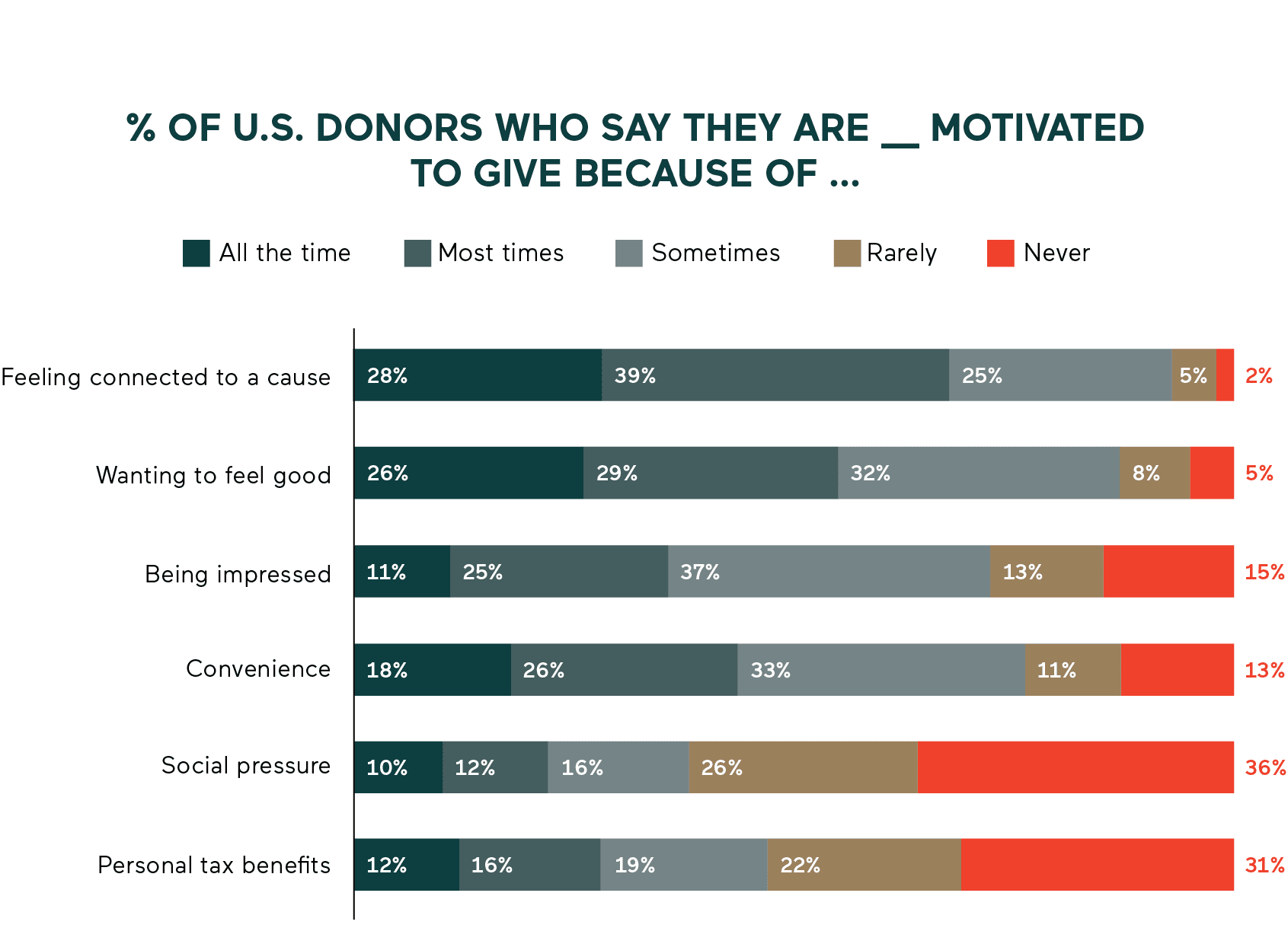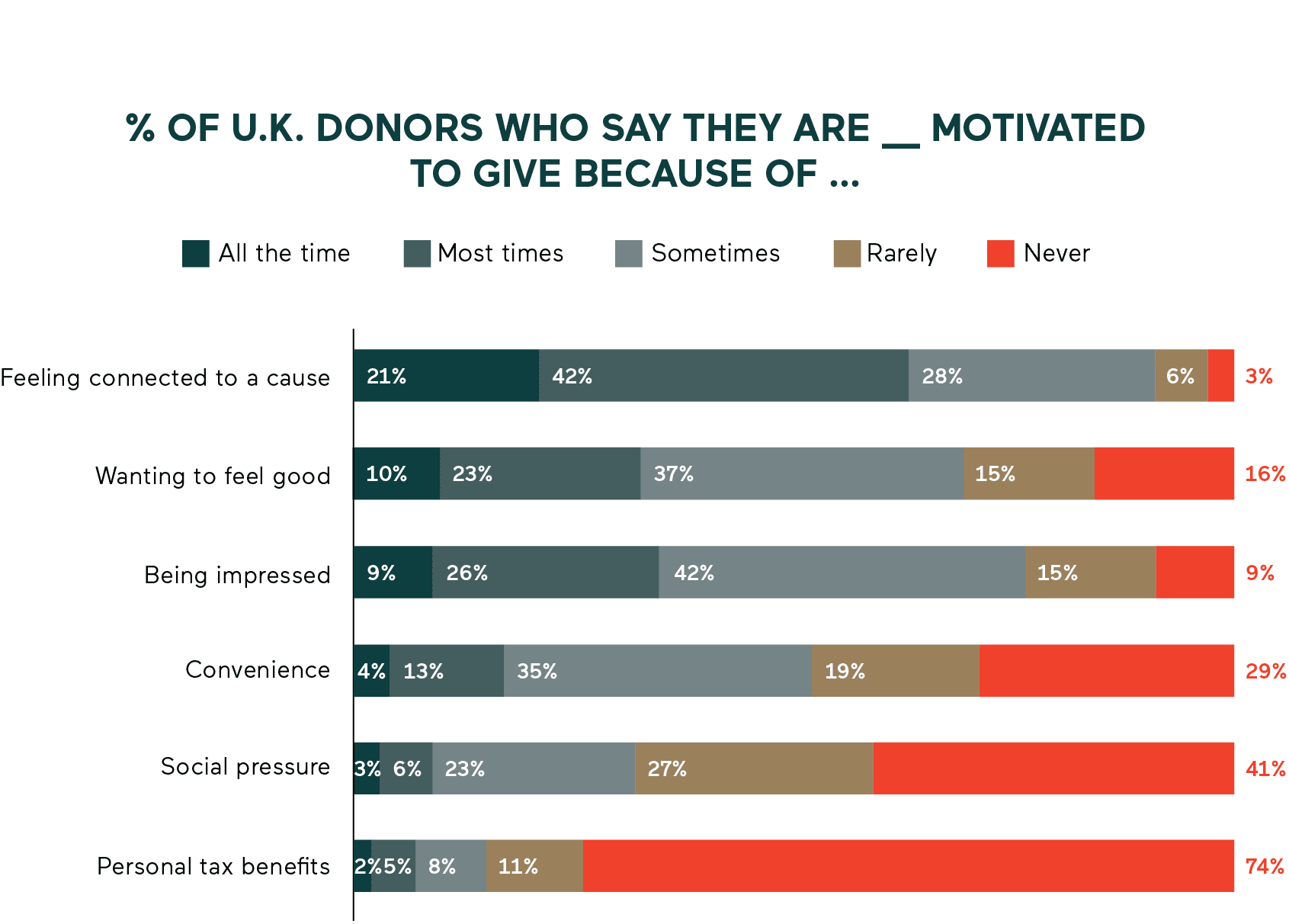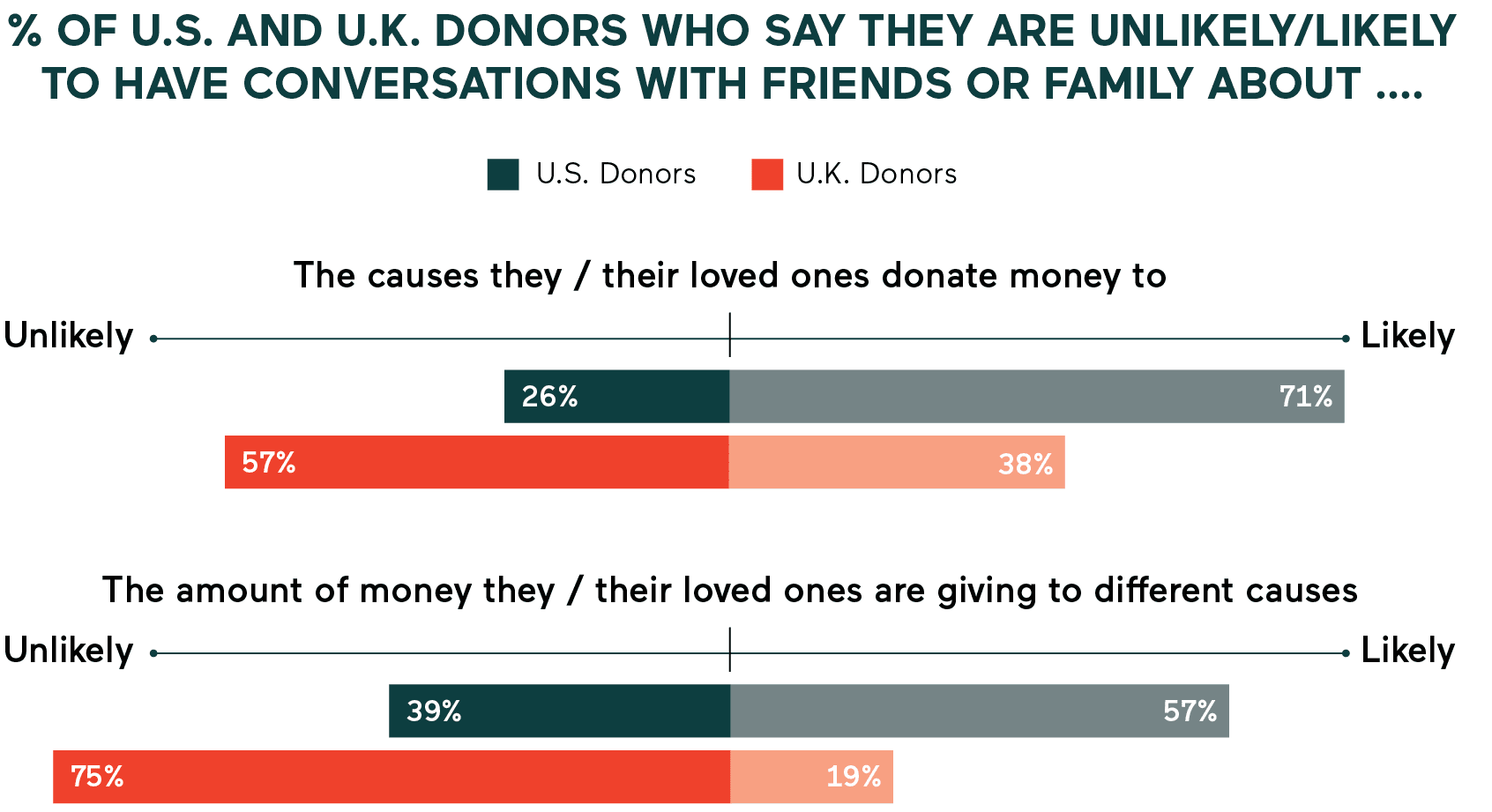Over the past 25 years, the CAF American Donor Fund (CADF) has distributed over US$1.5 billion (£1.1 billion) in donations from dual taxpayers in the U.K. and the U.S. To commemorate CADF’s 25th anniversary, the Charities Aid Foundation (CAF) explored how charitable giving compared in the U.S. and U.K., with a study led by our CAF America research team.
The more social purpose organizations can understand and respond to the motivations of donors to give, the better equipped they are to inspire action and build long-term donor relationships. As part of our U.S. and U.K. donor research, we examined in more depth the reasons each of these audiences donates to identify lessons for charities aiming to secure their support.
Why U.S and U.K. Donors Give
Charities need a compelling story to resonate with potential donors in the U.K. and U.S. Nearly all the U.S. and U.K. donors we asked (98% and 97% respectively) said that they are motivated to give when they feel connected to a cause. For many, this is the main reason they choose to give all, or most of the time. Similarly, 85% of U.S. donors and 91% of U.K. donors shared that being impressed by a charity’s work drives them to donate, alongside 95% of American donors and 85% of U.K. donors who reported they give because it makes them feel good.
To build a well-crafted narrative, it is important that charities:
- Communicate in ways that enable potential donors to engage and connect with their mission.
- Showcase their impact as clearly as possible, sharing the story of their successes so supporters can see what is possible and be confident of the difference their support can make.
Make It Easier to Give
Convenience plays a powerful role in how people donate. Most donors – 87% in the U.S., 71% in the U.K. – say that they are more likely to give to a charity when the donation process is straightforward and easy to do. Conversely, if giving feels confusing, time-consuming, or overly complicated, donors may abandon the process, especially when other charities in similar cause areas offer a more seamless experience.
Both U.S. and U.K. donors expect a smooth, intuitive journey, whether they are choosing to give online, by mail, or through workplace or recurring giving platforms. If barriers exist, only the most committed supporters will continue with their donation.
To make the donation process as simple and user-friendly as possible, charities should aim to:
- Offer multiple giving options.
- Optimize their website for mobile.
- Give clear and easy-to-follow instructions about how to give at every touchpoint.
Why Else Do People Give?
While over half of donors in both countries say that they have given due to social pressure, few (9% in the U.K. and 22% in the U.S.) cite it as a primary motivator. If a fundraiser’s goal is long-term engagement, they are more likely to succeed if they focus on building positive and authentic relationships rather than relying on guilt or urgency. In addition, 76% of U.S. donors often look to causes they have given to before, have personal experiences with, or that their loved ones care about when they look to donate.
American donors are more likely to cite tax effectiveness as a factor in their giving, although not a major one, perhaps reflecting differences between the tax frameworks in the two countries. It is important for charities to:
- Understand the different tax environments in the U.S. and the U.K.
- Highlight the benefits of giving to their charity to donors, including how they can give in a tax-effective way. But also recognize when planning communications that this is not a primary reason for why people give.
While tax benefits may not be the catalyst behind many donors’ giving, they can be seen as a perk and may be a factor when and where a donor decides to give.
Leverage Americans’ Openness to Inspire More Giving
American donors are far more comfortable discussing charitable giving than U.K. donors — be it the causes they support or the amounts of money they give. A majority of U.S. donors say they are likely to discuss either topic with their loved ones. So, charities should feel comfortable asking U.S. donors directly if they would be interested in donating. American donors are particularly likely to donate around the holidays when the charities they care about ask them to give. And, a fifth of U.S. donors in 2024 identified a cause to give to because they received a targeted request asking them for a donation.
As a result, charities may benefit from targeting their communications to:
- Spark conversations between existing U.S. donors and their family and friends, about the charity’s work and impact.
- Offer clear, practical ways for donors to fundraise on the charity’s behalf, tapping into a common way Americans identify new causes to support.
Explore More Donor Insights
Want to dive deeper into what drives charitable giving in the U.S. and U.K.?
- Read more findings from our 2025 U.S. and U.K. Giving Research
- Discover additional donor motivations and strategies on our End-of-Year Giving Insights Hub







